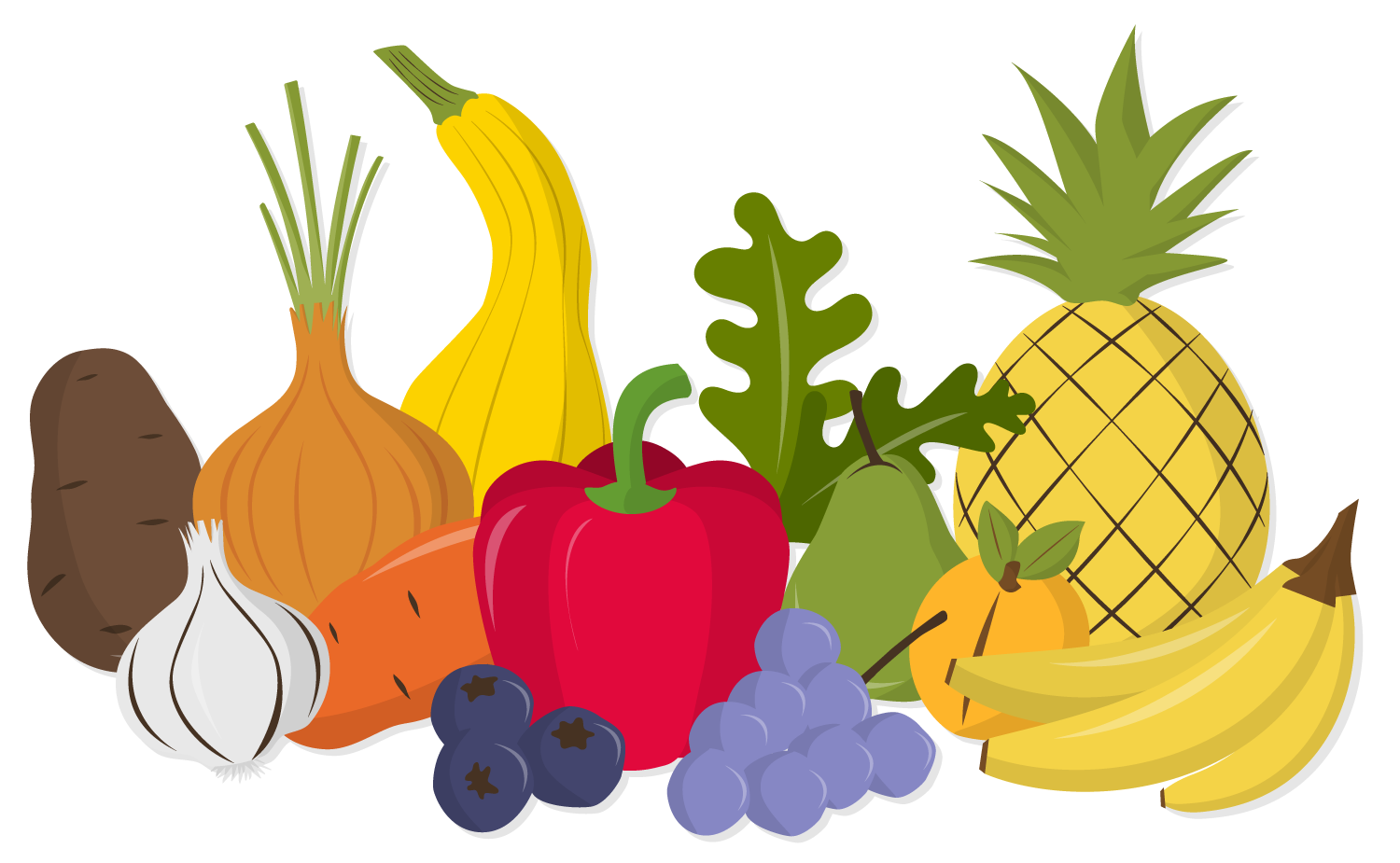How to Store Fruits and Vegetables
Tips for keeping fruits and veggies fresh
Jul 10, 2018
General storage tips for fruits and vegetables
While fruits and veggies each have their own specific storage preferences, they also have several preferences in common. To get yourself started on the right track, check what fruits are in season to make sure your favorite fruit is available. Produce always tastes best when they are in season, so learn their peak times before learning how to store fruit!
- Immediately remove any rubber bands or ties used to keep your produce together when you get home. Leaving them on can bruise your produce.
- Make sure to also cut off the leafy tops of root vegetables (like radishes and carrots) and store them separately. Leaving the tops on drains the moisture out of your produce and can cause the vegetables to quickly lose flavor.
- Refrain from washing your produce unless you’re ready to eat them right away. Moisture overall is an enemy to freshness for most produce, so make sure your fruits and veggies are completely dry before storing them. Cut fruit, on the other hand, will dry up in three days and should be stored in the fridge as soon as possible.
- The crisper, more commonly known as the fruit/vegetable drawer at the bottom of your fridge, is prime real estate for most of your fruits and vegetables. It is the coldest part of the fridge and sometimes has settings to that will let you control the humidity.
Some groups of food have specific storage preferences. See a few common preferences below.
Berries especially do not like moisture. It’s best to keep them flat on top of a paper towel on a plate or in a container that allows them to lay out on the plate in one layer. In other words, spread your berries out so they do not lay on top of each other. If you see any bad or rotten berries, make sure to toss them right away so they do not ruin the rest of the batch!
There are a few exceptions to the moisture rule. One specific exception includes vegetables that still have roots. The roots for these vegetables should be kept moist, so wrap the roots in a damp paper towel before storing in the fridge.
Another slight exception involves leafy greens. You can wash leafy greens by rinsing them with cold water prior to storage. After rinsing your greens, lay them flat on a towel or use a salad spinner to dry. Once they are completely dry, store in the fridge in an open container wrapped in a dry paper towel to absorb excess moisture.
Why do I have to keep some fruits separate?
Some fruits emit a chemical called ethylene gas. This speeds up the ripening process for produce and can either be a good or a bad thing. It’s great if you are trying to ripen your avocados, but not so great when your peaches accidentally go bad. This is why it’s important to pay attention to where you store fruits in your home and even more important to store fruits and vegetables separately.
Here’s a list of some fruits that produce a lot of ethylene gas that you should keep separate from other produce:
- Apples
- Apricots
- Avocados
- Bananas
- Cantaloupe
- Figs
- Nectarines
- Peaches
- Pears
- Plums
- Tomatoes
Only put these high ethylene-producing fruit near your unripened produce if you're trying to accelerate the ripening process. You can speed up the process even more by sticking them inside a brown paper bag to concentrate the ethylene-gas in a contained area.

Where to store fruits and vegetables
Below we give you detailed storage information for your fruits and vegetables and include approximately how long they’ll stay fresh. You can also jump down to the fruit and vegetable chart if you just need to take a quick glance to know how to store fruit and veggies!
Keep in mind that approximations are under the assumption that the fruit and vegetables are already ripe, uncut, unpeeled and in its most ideal storage location. You should learn how to pick the best fruit when you’re out running errands so you have a better chance of picking up the tastiest fruit. You should also always double-check your fruit for mold or blemishes before consuming to stay on the safe side!
Refrigerator
Fruit
Vegetables
Counter to Fridge
These fruit can't ripen in the fridge, so keep them on the counter to ripen then move to the fridge to prolong freshness. Remember to also keep these fruit out of direct sunlight while they sit on the counter.
Pantry
Most vegetables in this category should live in dark, dry and cool areas with good ventilation.
How to store fruits and vegetables chart
Peruse through our chart below if you want to quickly reference how to store fruit and vegetables after a quick stop at the grocery store!

Learning how to store fruit and vegetables can help you save time, money and space in both your fridge and your counter. The best rule of thumb to follow is to eat your produce as soon as possible and not to pick up more than you can eat! While you’re waiting for your fresh produce to ripen, you can also pick up some dipped berries or dipped cherries to indulge your sweet tooth.






